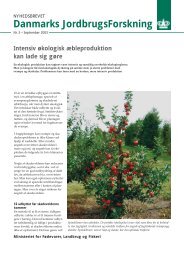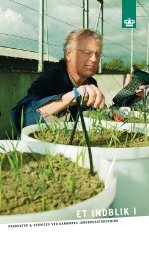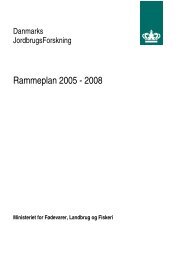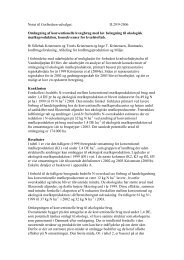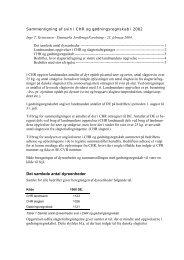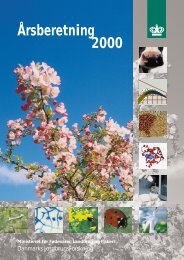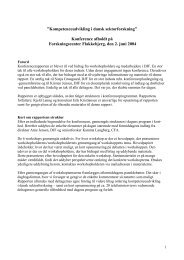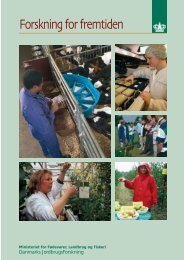Reproduction performances and conditions of group-housed non ...
Reproduction performances and conditions of group-housed non ...
Reproduction performances and conditions of group-housed non ...
You also want an ePaper? Increase the reach of your titles
YUMPU automatically turns print PDFs into web optimized ePapers that Google loves.
- Paper I -<br />
Therefore, the aim <strong>of</strong> this review is to consider whether the variation in feed intake in a<br />
<strong>group</strong> <strong>of</strong> <strong>non</strong>-lactating female pigs can influence the variation in litter size <strong>and</strong> pregnancy<br />
rate in practice.<br />
Emphasis will be upon studies made in the eighties <strong>and</strong> forth. Several studies in the sixties<br />
<strong>and</strong> seventies have examined the effect <strong>of</strong> energy intake on pregnancy rate <strong>and</strong> litter size.<br />
However, intense genetic selection has changed the genotype <strong>of</strong> breeding sows why some<br />
<strong>of</strong> the early work may no longer be relevant to commercial sow herds (Ashworth & Antipatis,<br />
1999).<br />
Pope (1994) <strong>and</strong> Foxcr<strong>of</strong>t (1997) point out that it is important to consider the effect <strong>of</strong> nutrition<br />
in the different reproductive stages <strong>of</strong> the sows separately because the effect in the<br />
different phases can vary. Furthermore, from a practical point <strong>of</strong> view, it is important to<br />
know when the sow’s reproduction is most susceptible to a low or a high energy intake because<br />
only then it is possible to adjust the feeding system in the different stages. This could<br />
be <strong>of</strong> outmost economical importance for the individual farmer because individual feeding<br />
procedures, like for instance one feeding stall per sow, are much more expensive than<br />
<strong>group</strong> feeding procedures, like floor feeding. Therefore, in this review, the effect <strong>of</strong> energy<br />
intake will, whenever possible, be divided into 1) Effect <strong>of</strong> energy intake before mating (in<br />
the oestrus cycle or after weaning) 2) Effect <strong>of</strong> energy intake in the early pregnancy (also<br />
called the embryonic phase i.e. the first 35 days after fertilization) <strong>and</strong> 3) Effect <strong>of</strong> energy<br />
intake in the mid <strong>and</strong> late pregnancy.<br />
2. Effect <strong>of</strong> energy intake before mating<br />
In Table 1, the results from the 12 experiments presented in this chapter are summarized. In<br />
these experiments, the effect <strong>of</strong> energy intake before mating on ovulation rate; number <strong>of</strong><br />
embryos <strong>and</strong>/or pregnancy rate has been studied.<br />
25




